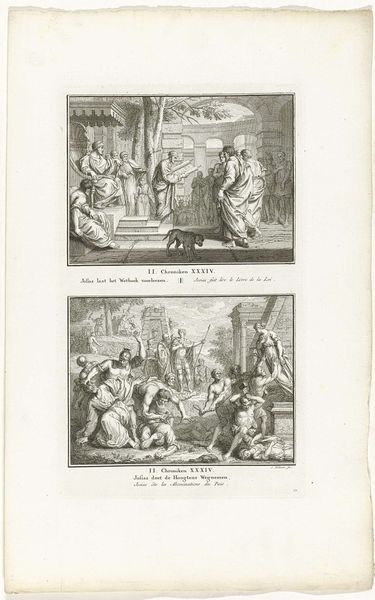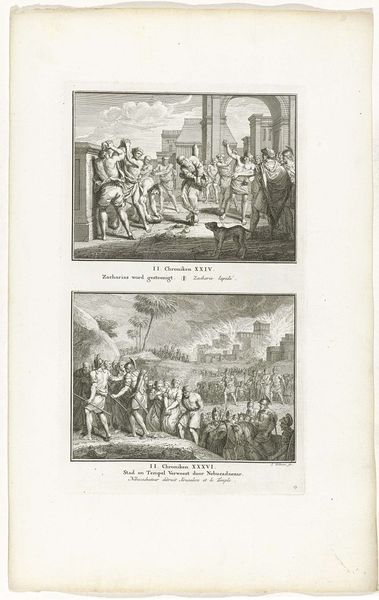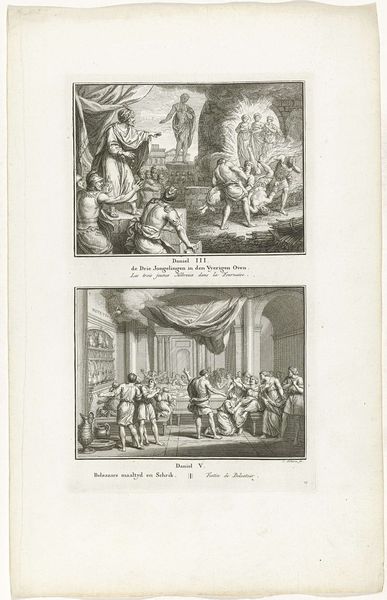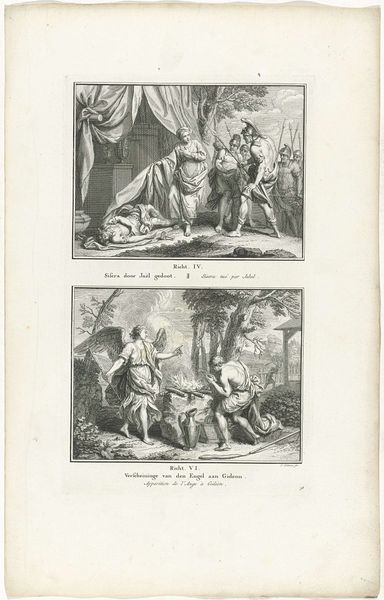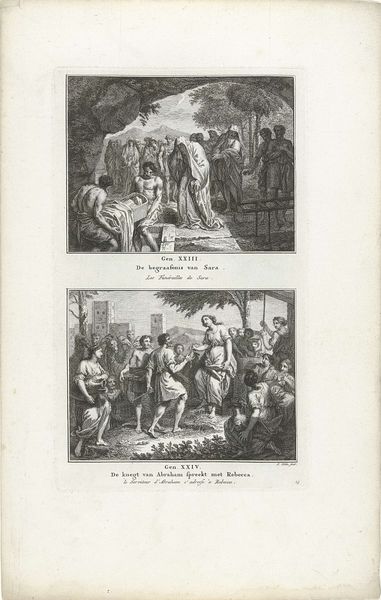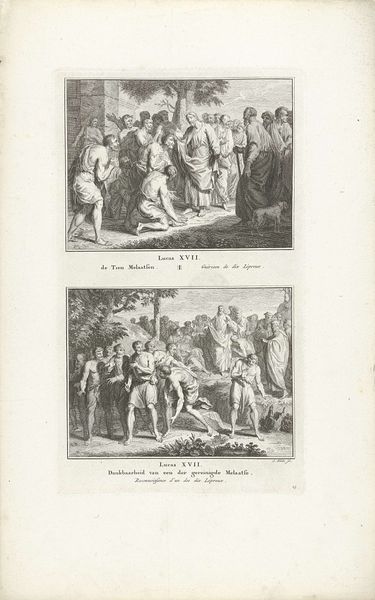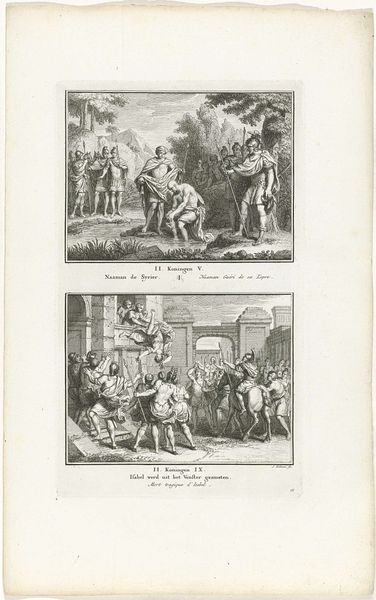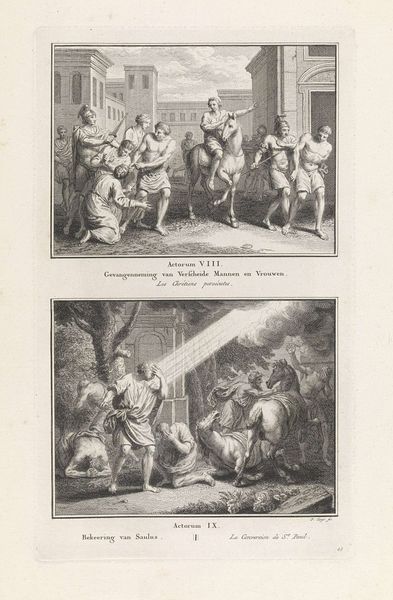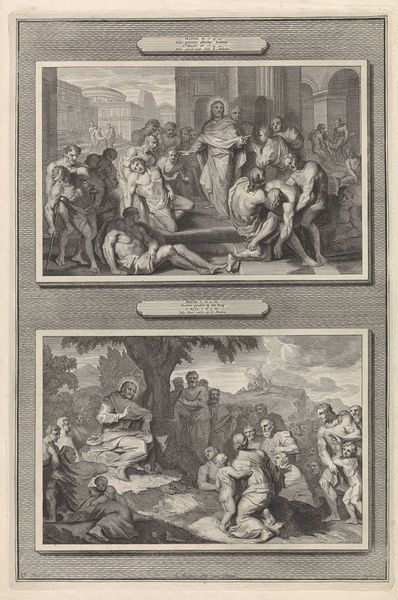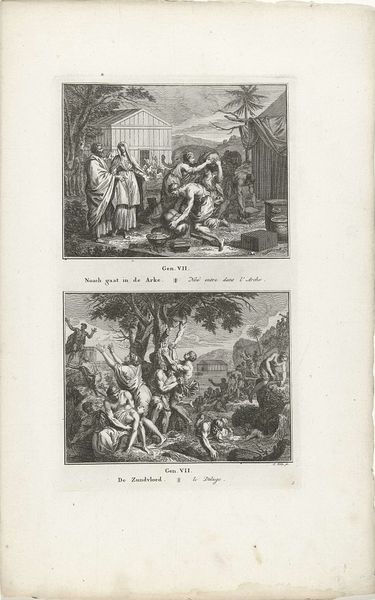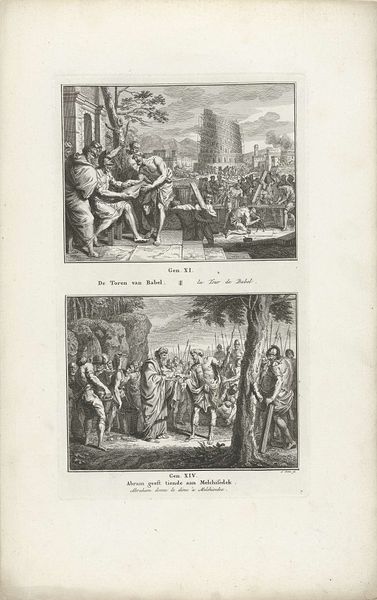
Dimensions: height 326 mm, width 195 mm
Copyright: Rijks Museum: Open Domain
Curator: I see two distinct moments, etched in incredibly fine detail. There's something immediately compelling, almost theatrical about its composition, would you agree? Editor: The composition feels a bit stagey to my eye too, almost like paired freeze-frames of a larger, unseen drama. It reminds me of religious baroque painting, with dynamic lighting. I can sense it's supposed to impart some type of important message, despite its small size. Curator: Exactly. Jacob Folkema created this print in 1791. It's titled "Shimei Cursing David and the Death of Absalom." As the title indicates, we see two scenes that are very well known in Christianity. It is an engraving— so incredibly precise, given the dramatic scenes it portrays. The Rijksmuseum now holds it. Editor: So, we have a tangible depiction of symbolic narratives— of curse, rebellion, and justice delivered, maybe even redemption implied in the larger biblical arc. David's story has had an impact for thousands of years, that reverberates through these graphic images. Do you think Folkema wants us to ponder David's actions or our own capacity for evil, when angered or wronged? Curator: I'd suggest, Folkema’s not preaching a moral as such, but rather, highlighting the paradox of human nature. Think about how a single act, Absalom’s rebellion against his father David, unfolds into a web of conflicting consequences, it's all right there—Shimei cursing the king, Absalom meeting his death so tragically in that dense wood. To put it another way, doesn’t the density in the forest mirror that density of fate? Editor: Absolutely, these prints offer viewers tangible images to contemplate larger themes. And yet I struggle sometimes with the artist's choice to combine two distinct narratives onto a single, conjoined composition. As a cultural artifact it functions very well though, I will admit. Curator: The choice actually reveals how intertwined the two scenes really are— how one narrative feeds directly into the other. A son rebels and dies, a king is humiliated then mourns— It all shows us this tangled tapestry. Editor: That’s a very persuasive observation. It encourages viewers to consider a complete emotional cycle, from the high of perceived righteousness, to the gut-wrenching depths of grief. So often these tales from the Old Testament have shaped moral and artistic codes across vast reaches of time. Thank you. Curator: You've touched on it there. In a flash, an etching brings these concepts together and you just realise... history rhymes, constantly, again and again. Thank you.
Comments
No comments
Be the first to comment and join the conversation on the ultimate creative platform.
